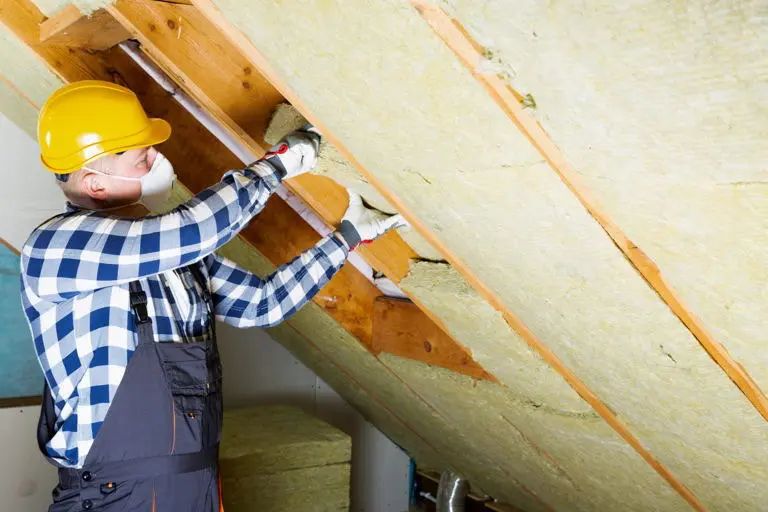When winter kicks in, most of us face the same dilemma—how do you stay warm without watching your energy bill spiral out of control? Cranking up the heat feels easy, but it’s not always smart or sustainable.
The good news? You don’t need major renovations or expensive systems to keep your home warm.
A few practical changes, smarter materials, and attention to the little things can make a huge difference.
Let’s break down the real, doable steps that keep warmth inside your home—and money in your pocket.
Key Highlights
- Most heat escapes through walls, roofs, windows, and floors—insulation is key.
- Curtains, rugs, and radiator placement directly affect how heat moves.
- Programmable thermostats let you focus heat where you actually need it.
- Draught-proofing is a small task with a big payoff.
- Using a mix of habits and smart upgrades brings the best results.
- Choosing the right home insulation material changes your energy costs long-term.
Where Heat Disappears—and Why You Should Care
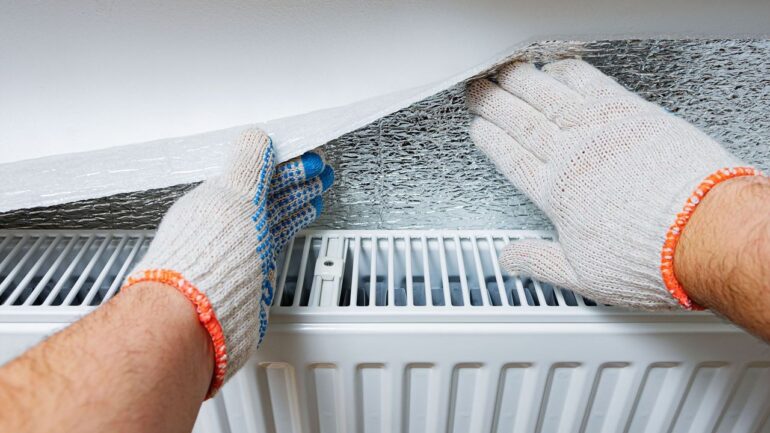
Let’s start with the basics. Heating your home is only half the equation. The other half? Keeping that heat from leaking out.
Most homes—especially older ones—aren’t airtight. Heat escapes through the roof, gets sucked out of uninsulated walls, and seeps out through tiny cracks around windows and doors.
Even if your heating system is doing a decent job, you’re still wasting energy (and money) if your home isn’t holding on to it.
This is why insulation is your first real defense. It doesn’t just slow heat loss—it makes every minute your heating system runs more effective. Think of it as giving your home a winter coat.
And it’s not just about the attic.
Walls, floors, and even rendered exteriors can benefit massively from the right home insulation material.
For example, breathable render systems or mineral wool insulation create a thermal barrier that keeps heat where it belongs.
Get the Most from Your Curtains
You’d be surprised how much difference a curtain can make.
During daylight, let in as much sun as you can. Natural light carries radiant heat that can actually warm your space without costing a thing. But once the sun goes down, that same glass becomes a major point of heat loss.
That’s where the right curtains come in handy:
- Thermal-lined curtains help trap heat inside and block cold drafts.
- Make sure curtains fully cover the window and touch the floor.
- Draw them closed before nightfall to lock in the day’s warmth.
- Don’t let them block radiators—they’ll trap heat instead of spreading it.
These adjustments may feel minor, but they combine into real comfort.
Radiators Are Not Decorative Shelves
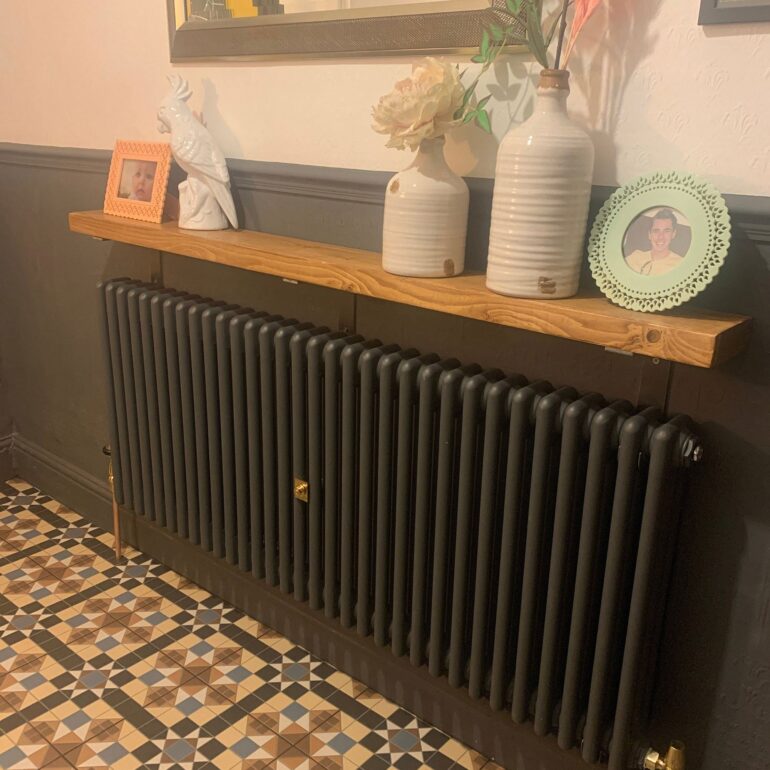
This might sound obvious, but it’s one of the most common heating mistakes: blocking radiators.
When you place a large piece of furniture in front of a radiator, or hang long curtains that cover it, you’re creating a heat barrier. The warmth stays trapped behind whatever’s blocking it, and you’ll feel cold even if your heating is working overtime.
What can you do?
- Give your radiators space—don’t cover or crowd them.
- Add reflective panels (you can even use kitchen foil in a pinch) behind radiators mounted on exterior walls.
- Bleed your radiators regularly to remove trapped air and improve efficiency.
Let them do their job. They’re not wall décor—they’re your heat source.
Floors Make a Bigger Difference Than You Think
Have you ever walked barefoot on a wooden or tiled floor in winter? It’s a quick reminder of how much heat can vanish through the ground. Floors are often overlooked, but they’re a huge factor in how warm or cold a room feels.
If you’re not ready to insulate under your floors (a bigger project), here are quick fixes:
- Use large rugs in high-traffic and sitting areas.
- Place thermal underlays beneath rugs for an extra layer of warmth.
- Seal gaps in wooden floorboards with flexible fillers or strips.
Even these simple solutions help stop cold air from creeping in and warm air from drifting out.
Smarter Heating Starts with Better Controls
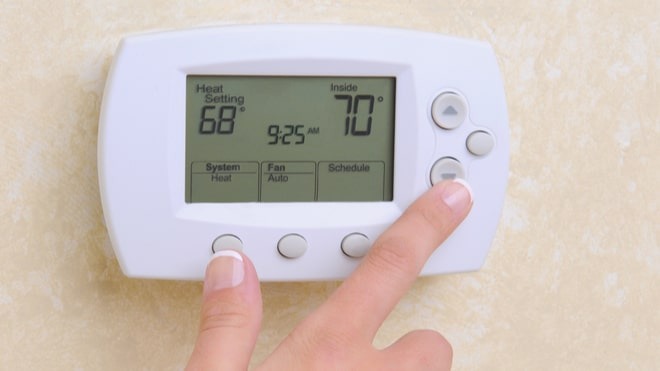
Now let’s talk thermostats. If you’re still using a single setting to heat the whole house all day, you’re probably wasting more energy than you think.
Programmable and smart thermostats change the game. Instead of heating every room, all the time, they let you create zones. You can:
- Set different temperatures for different times of day.
- Lower the temperature in unused rooms.
- Create schedules that match your actual routine.
Even better, lowering your thermostat by just 1°C can save up to 10% on your heating bill annually. That’s not theory—it’s backed by UK government energy data. And you probably won’t even notice the change in temperature.
Seal the Gaps Before You Lose More Heat
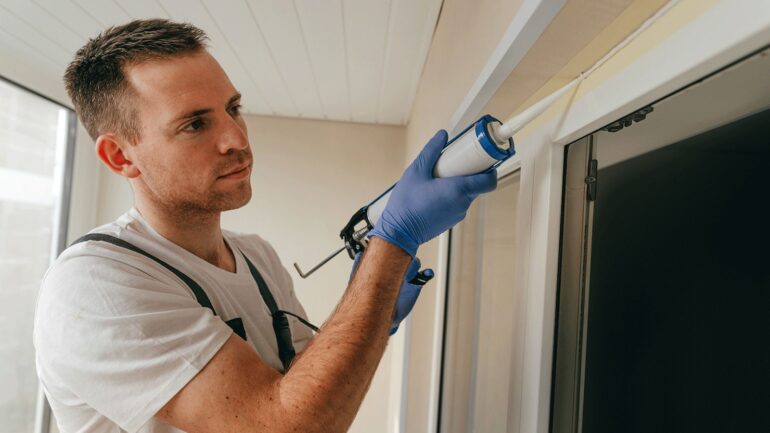
Let’s talk draughts. You can’t always see them, but you can definitely feel them—especially near windows, doors, floorboards, and attic hatches. Cold air slips in, warm air slips out. It’s a slow drain on comfort and your energy bill.
The solution? Draught-proofing. It’s easy, cheap, and effective. You can buy self-adhesive weatherstrips, draught excluders, and sealant tubes from any hardware store. And you don’t need a pro—you can do it in an afternoon.
Focus on:
- External doors and window frames
- Chimneys and keyholes
- Letterboxes and unused vents
- Skirting board gaps and floorboard cracks
You don’t need to seal the house like a submarine. Just close the spots that let heat sneak out.
Final Thought: Warmth Is About Strategy, Not Just Heat
Staying warm isn’t just about pouring more heat into your home. It’s about holding on to the heat you already pay for. Every fix you make—whether it’s adding a rug, sealing a door frame, or updating insulation—makes the entire system more efficient.
So don’t fall into the trap of thinking you need a new boiler or fancy app-controlled radiators. Start simple. Focus on insulation. Learn your home’s weak spots. Then work your way toward smarter solutions. Layer your comfort like you layer your clothes in winter.
Because a warm home shouldn’t mean an empty wallet.

